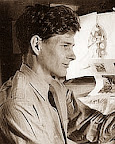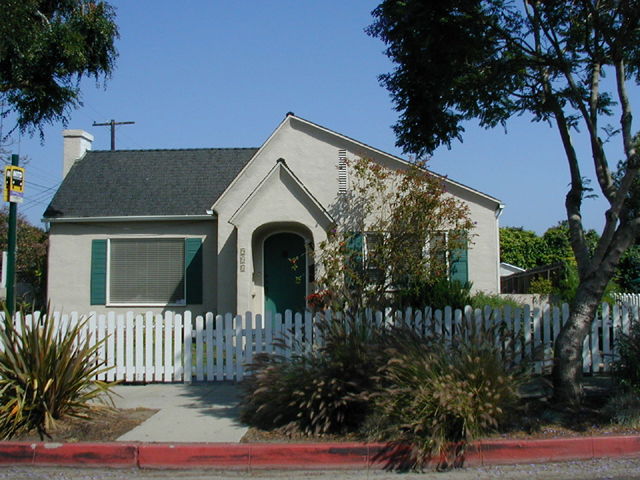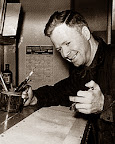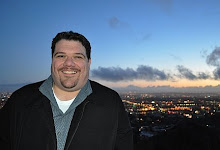
After the United States entered World War II in December 1941 the service from the animation community was considerable. Most people continued to work at the studios, albeit on far different projects than what they were used to. A good number joined the military where many of them would work producing training films as members of the Signal Corps and others would serve in various capacities at locations throughout the country. There was a small handful however, who enlisted in the military and saw combat.
Willard Bowsky was one of them.
Willard G. Bowsky was born in 1907, the second son to parents Herman and Emma Bowsky. The Bowskys were married in the spring of 1898 and welcomed their first  son, Merle on Christmas Day 1904.
son, Merle on Christmas Day 1904.
During Willard's childhood the family lived on both sides of the Hudson River, jumping between homes in New Jersey and Manhattan. Shortly after Willard was born the Bowsky's moved in with his recently widowed grandfather, Gustav Cimiotti at 881 West End Avenue in Manhattan. At the time the home was filled with several of Willard's aunts and uncles as well.
By the time of Willard's tenth birthday they were living at 132 Sherman Avenue and his father was working as a lawyer with the American Railway Express Company. In the early 1920s the Bowskys had moved to 559 W 188th Street near northern tip of Manhattan. It is from this home that Willard would commute as he started work in the field of animation.
Bowsky began his work at the Fleischer Studios in the late 1920s and by 1930 had elevated to the level of a credited animator. His animation work can be seen in the Talkartoon, Color Classics and Screen Song (Bouncing Ball) films, but he is well known for animation on dozens of Betty Boop and Popeye cartoon shorts.
 In later work on the Popeye films his work has been described as that of director, a credit generally reserved for Dave Fleischer. In any case, Bowsky was at least a supervising or directing animator, though he never received a credit beyond that of animator.
In later work on the Popeye films his work has been described as that of director, a credit generally reserved for Dave Fleischer. In any case, Bowsky was at least a supervising or directing animator, though he never received a credit beyond that of animator.
In the fall of 1938 Bowsky had relocated to Florida to the beautiful new home of the Fleischer Studios in Miami. There he would continue to be a lead animator on the Popeye shorts and also on the animated feature films, Gulliver's Travels and Mr. Bug Goes to Town.
Early in 1942 Max and Dave Fleischer were gone and the studio was under control of Paramount and was renamed Famous Studios. The last films that Bowsky was involved with were the Superman cartoon shorts.
Motivated by a personal sense of duty (coupled with a possible disenchantment with the direction of the studio,) Willard Bowsky, unmarried at the time, enlisted in the Army on October 14, 1942. His older brother Merle had enlisted some time earlier.
 Following training, Willard was assigned to the 14th Armored Division. He was a platoon leader with 50 men under his command in the 94th Cavalry Reconnaissance Squadron. He also made an artistic contribution to his squadron by designing the unit’s insignia (at left.)
Following training, Willard was assigned to the 14th Armored Division. He was a platoon leader with 50 men under his command in the 94th Cavalry Reconnaissance Squadron. He also made an artistic contribution to his squadron by designing the unit’s insignia (at left.)
 The 14th Armored Division arrived at Marseille, France on October 30, 1944. Within a couple weeks Bowsky's unit was among those mobilized to join the Seventh Army in the Southern Vosges Mountains (due east of Paris, near the German border.)
The 14th Armored Division arrived at Marseille, France on October 30, 1944. Within a couple weeks Bowsky's unit was among those mobilized to join the Seventh Army in the Southern Vosges Mountains (due east of Paris, near the German border.)
Willard’s was among the squadrons that comprised The Division’s Combat Command A (CCA). They were soon ordered to advance into an area southwest of Strasbourg, just west of the Rhine. CCA’s mission was to clear German forces from the area and fight its way south to the town of Selestat. Cavalry squadrons were used for reconnaissance and were deployed in front of and along the flanks of advancing armored columns. Bowsky's unit encountered a German column withdrawing eastward to cross the Rhine. A night time fire-fight erupted and Second Lieutenant Willard Bowsky was killed in action on November 27, 1944. Willard and the men of his platoon were good soldiers who fought bravely. In the end the fight was won. Willard was a genuine war hero.
He was awarded the Silver Star and the Purple Heart and is interred at the Lorraine American Cemetery in St. Avold, France .
We remember Willard Bowsky today and honor his service to his county, his contributions to the field of animation and celebrate the centennial of his birth.
REFERENCES and CONTRIBUTIONS






















